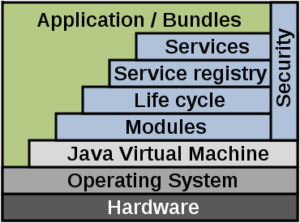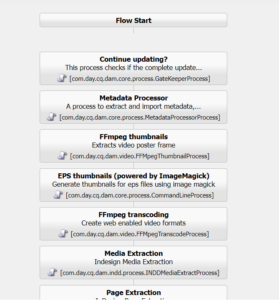The OSGi Alliance, formerly known as the Open Services Gateway initiative. The OSGi specification describes a modular system and a service platform for the Java programming language that implements a complete and dynamic component model, something that does not exist in standalone Java/VM environments. Applications or components, coming in the form of bundles for deployment, can be remotely installed, started, stopped, updated, and uninstalled without requiring a reboot; management of Java packages/classes is specified in great detail. Application life cycle management is implemented via APIs that allow for remote downloading of management policies. The service registry allows bundles to detect the addition of new services, or the removal of services, and adapt accordingly.

Architecture
OSGi (Open Service Gateway Initiative) is a Java framework for developing and deploying modular software programs and libraries. Each bundle is a tightly coupled, dynamically loadable collection of classes, jars, and configuration files that explicitly declare their external dependencies (if any).

The framework is conceptually divided into the following areas:
- Bundles
- Bundles are normal JAR components with extra manifest headers.
- Services
- The services layer connects bundles in a dynamic way by offering a publish-find-bind model for plain old Java interfaces (POJIs) or plain old Java objects (POJOs).
- Services Registry
- The application programming interface for management services (ServiceRegistration, ServiceTracker and serviceReference)
- Life-Cycle
- The application programming interface for life cycle management (install, start, stop, update, and uninstall) for bundles.
- Modules
- The layer that defines encapsulation and declaration of dependencies (how a bundle can import and export code).
- Security
- The layer that handles the security aspects by limiting bundle functionality to pre-defined capabilities.
- Execution Environment
- Defines what methods and classes are available in a specific platform.

